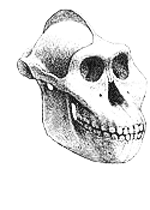| FOSSIL SKULLS | STONE TOOLS | OVERVIEW | HUMAN EVOLUTION | 13 BIG QUESTIONS | ||||||||
| PARANTHROPUS AETHIOPICUS | ||
 |
||||||||
 |
|||||||
 Paranthropus aethiopicus
|
||||||||||||||||||||||||||||||||||||||||||||||||||||||||||||||||||||||||||||||||||
| FOSSIL SKULLS | STONE TOOLS | OVERVIEW | HUMAN EVOLUTION | 13 BIG QUESTIONS | ||||||||
| PARANTHROPUS AETHIOPICUS | ||
 |
||||||||
 |
|||||||
 Paranthropus aethiopicus
|
||||||||||||||||||||||||||||||||||||||||||||||||||||||||||||||||||||||||||||||||||